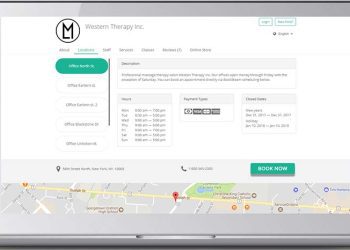In the wake of pressure from governments on for the private sector reduce greenhouse gas emissions, most powerful companies in the world have looked to financial products to reduce their carbon footprint carbon credits.
The market is booming that is hitting record records in volume, and predicted to be worth $1 billion by 2021 According to Ecosystem Marketplace. It’s a publication published by the nonprofit environmental finance research group Forest Trends. In the days leading up to this weekend’s United Nations Climate Change Conference beginning on Sunday on Sunday, the U.N. Environment Programme issued a report which said that the carbon market could “help reduce emissions” by having clear rules and transparent.
What makes carbon credits crucial? Why is it important whether or not they’re utilized?
What is a carbon credit?
Carbon credits are a type of permit which represents one kilogram of carbon dioxide taken from the air. They can be bought by an individual, or typically, a business to cover carbon dioxide emissions that result from factories transport vehicles, delivery or transportation.
Carbon credits are usually made through forestry or agriculture practices, however, credits can be earned by almost any endeavor that decreases the amount, eliminates, or takes emissions. Businesses or individuals who want to offset their carbon emissions from greenhouse gases can buy these credits through an intermediary or directly capturing carbon. If it is the farmer who plants trees on their land, the owner is paid cash; the company will pay to offset their carbon emissions, The middleman if one, earns some profit in the process.
However, this is only applicable to what’s known as”the “voluntary market.” There is also an voluntary or “compliance market.”
What exactly is what is the “compliance market” for carbon credits?
In the market for compliance, or the involuntary market, government officials put a limit on how much carbon dioxide specific sectors like transportation, oil, or waste management are allowed to release.
If an oil firm such as a company goes over the emissions limit prescribed by law the company must purchase credits or store them to keep the emission limit. If a company remains within the limit then it can either save or sell the credits. This is referred to as a cap-and trade market. The limit is the amount of greenhouse gas emissions a state will permit for release into the air and emitters have to trade within the amount.
While business leaders and politicians have talked about setting a price for carbon emissions, it is not the case that U.S. does not have a national, broad-ranging cap and trade market for greenhouse gasses.
Environmentalists, businesses, and regulators have discussed the possibility of a global cap-and-trade climate change market. However, it’s difficult to come to a consensus on a standard timeframe that is common to all, a common price, a transparent measurement, and common standards as stated by Alok Sharma, president of this year’s United Nations Climate Change Conference, also known as the COP26.
What is the size of the market for carbon credits?
The market for voluntary carbon is poised to hit the record amount of $6.7 billion by 2021’s end, according to a report in September of Ecosystem Marketplace. At present traders in the European compliance market expect carbon prices to rise up to 88 percent and reach $67 per ton in 2030, as per the June survey published of Ecosystem Marketplace. International Emissions Trading Association.
The rapid growth of the voluntary market during the year is mostly driven by the recent net-zero targets of corporate net-zero and a desire to meet global climate targets set within the Paris Agreement to limit global warming to 1.5 degrees Celsius above preindustrial levels.
What’s the nature of the purpose of the pushback?
The critics on the market for voluntary carbon credits, which is where companies purchase carbon credits from businesses that is not regulated by an exchange, argue that this doesn’t reduce the amount of greenhouse gas emissions released by the buyers. These are just offsets by corporations, giving them the opportunity to claim that they are environmentally friendly without actually cutting their emissions overall. Some critics call this “greenwashing.”
The carbon credits may also be purchased through projects that would be happening in the first place. For example, one investment firm says it pays farmers to transform their fields into forest and sell the credits to companies, according to Bloomberg. However, some farmers say they’ve already planted trees under the government’s conservation program.
Additionally, certain carbon credits generated by these initiatives are not guaranteed. As an example, world soccer body that governs soccer FIFA purchased credits to offset the emissions of during the World Cup in Brazil. Then, within a short time the trees were taken down. The project was halted in the year 2018 when more trees were cut than the total amount of credits that were sold.
What oversight or regulations does this market need?
The market is mostly without oversight by local or federal regulators.
Since the market is voluntary and does not set a limit on the amount of carbon dioxide emissions could be offset. Instead, the main supervision is through a set standards. There are several reputable organizations that have a validating role in carbon credits.
Verra is a Washington, D.C.-based non-profit organization founded in 2007 by both business and environmental leaders to enhance the quality of assurance offered by voluntary carbon markets, has created the most popular standard to confirm the authenticity of these credits. It’s known as Verified Carbon Standard. Verified Carbon Standard. Since its founding it has registered more than 175 projects in the world and validated more than 796 million carbon units.
The three major elements which make up Verra Carbon Standard are: Verra Carbon Standard are: accounting techniques that are specifically tailored to the type of project independent auditing and the registry system. It is designed to “make it certain both buyers and sellers have faith that they are purchasing something legitimate, and that the sellers have something worth having,” Verra CEO David Antonioli stated to NBC News.
The company is still in favor of accountability in the marketplace the CEO added.
“[If the market for voluntary participation will be successful in helping meet the goals set out in the Paris Agreement, it is going to need to be complemented by … or an individual initiative, or government intervention reductions within companies,” Antonioli said. “We are looking for real solutions here. If somebody is just trying to offset the issue, it’s not good … it’s not something we aren’t in support of this.”
What’s what is the U.S. government doing about carbon credits?
The U.S. Department of Agriculture hasn’t set or adopted the standards it has for its carbon credit. It does however finance carbon capture projects and releases information to aid agricultural companies profit from the opportunities in the market.
“We have to increase our efforts … in the understanding that there’s going to be plenty in private investments,” said Robert Bonnie who is the chief climate advisor for Secretary of Agriculture. USDA secretary. “We do not want to hinder this investment. We’d like to kind of help it enter the market.”
The USDA recently re-started the federal carbon credit regulation through the creation of a climate partnership initiative that would provide conservation projects that take place on working land and measure the benefits to sustainability and carbon which result from the implementation of those projects.
The Growing Solutions Act, which is still awaiting consideration in the House will help farmers, ranchers , and foresters understand carbon markets, and then sell carbon credits using a third-party certification process that is overseen by the USDA.
The Environmental Protection Agency currently runs an acid rain program that reduces sulfur dioxide by implementing an identical cap-and trade program. In this program, producers of sulfur dioxide are able to sell or exchange surplus sulfur dioxide permit, if they reduce their emissions and have more permits than they need, or purchase permits if they’re unable to reduce emissions to the set limit.
Are there any states that are creating any sort of carbon trading market?
California is the sole state that has the state-wide cap-and trade market for carbon. In 2030, the state hopes to reduce emissions to 40 percent lower than 1990 levels. The 450 entities that are that are targeted by the market have to provide a 15 percent overall cut in the greenhouse gas emission when compared to “business-as-usual” scenario for 2020. Companies that fall under the law of the state can purchase some carbon credits in order to keep them within the limits of emissions. California carbon credits are predicted to grow by around 64 percent, to $41 by 2030, as per the International Emissions Trading Association.
In addition to California, Oregon considered a bill in the past year that would limit emissions from the regulated sector to achieve an average reduction of 45 percent from 1990 levels by 2035 with an 80 percent cut from levels of 1990 in 2050.
Washington recently adopted a law that sets a limit on how much greenhouse gas that could be released, and then auctions all the permits to certain polluting sectors until the limit is attained. The goal of the state is to cut emissions 95 percent below levels of 1990 in 2050. Each year up to 2050 the cap will be reduced to allow the total emissions to decrease. The first compliance period of the program is scheduled to begin in 2023.
How Spray Foam Insulation Risks Your Property and the Environment
Spray foam insulation has become a popular alternative among homeowners trying to increase their property’s energy efficiency. At first, it...











